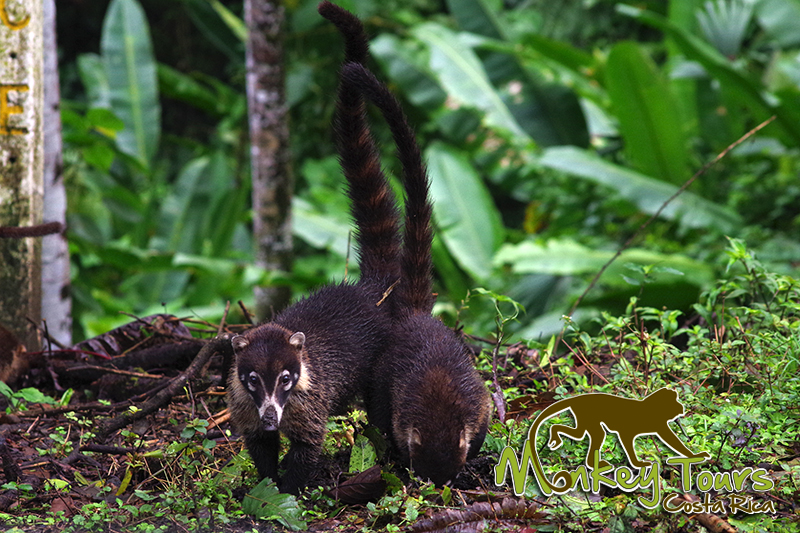Coatis from Costa Rica
The White-nosed Coati found in Costa Rica is also known by the common name coatimundi, and in recent years it has become the same kind of pest as raccoons in the United States.
Distribution
While Coatis are found from Mexico to South America, the species of White-nosed Coatis found in Costa Rica are particular to Mexico and Central America. Coatis inhabit dry tropical forests and wet tropical forests, and can be found in Barra Honda National Park, Corcovado National Park, Carara National Park, Rincón de la Vieja National Park and Tenorio Volcano National Park to name a few places in Costa Rica.
Mating & Reproduction
Coatis begin mating at the start of the rainy season to maximize food potential. In the breeding season, a male will join a group of females, and mate with them in trees or on the ground. After a successful copulation, females will separate from the group to build a nest in the trees. The gestation period is about 11 weeks, and the mother and baby coati stay in their nest for around five weeks after birth. At around 6 weeks the mother and her babe rejoin her original group.
Behavior
Coatis are diurnal foragers who spend most of their lives in trees making them primarily arboreal. They are omnivorous and eat fruit, eggs, carrion, insects and small vertebrates. Females are quite sociable, but they tend to dominate males. As a result, males tend to become solitary, and will only join female groups during the mating season.
Coatis communicate with one another via a collection of sounds that can convey joy, anger or dejection.
Miscellaneous Info
Coatis will smother themselves in the resin of certain trees as an insect repellant. They demonstrate a high level of intelligence, and are easily domesticated. They have been brought to a number of urban locations as a tourist attraction in Costa Rica through food rewards, but this has caused problems with local populations of Coatis becoming too large and aggressive.
Where to see it in Costa Rica: Barra Honda National Park, Corcovado National Park, Carara National Park, Rincón de la Vieja National Park, Tenorio Volcano National Park
Diet: eggs, fruits, carrion, insects, small vertebrates
Migration Pattern: non-migratory
Habitat: dry tropical forest, wet tropical forest
Size: length=110 cm (average) weight=2.5-6 kg (males are larger than females)
Species: Nasua narica

